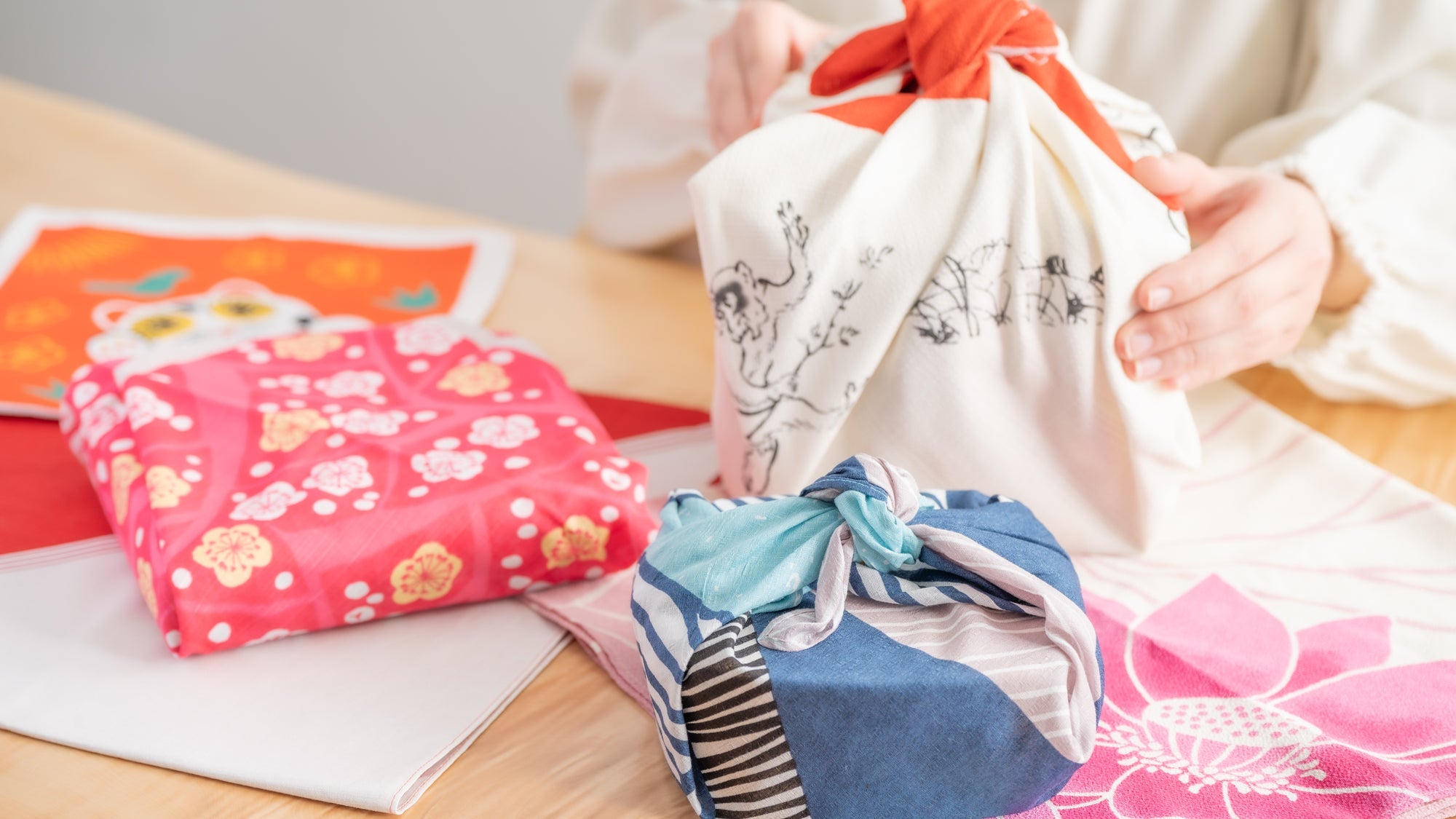
Guide To Furoshiki
Written by Team MUSUBI
In a world increasingly embracing sustainability and mindful living, traditional practices like using a furoshiki offer timeless solutions with modern relevance. Originating in Japan, furoshiki are versatile cloth wraps that have been used for centuries to carry items, wrap gifts and packages, and even serve as fashion accessories.
Whether you're looking to enhance your daily routines, explore creative ways to give a gift, or simply appreciate the artistry behind this cultural gem, this comprehensive guide to furoshiki will walk you through everything you need to know.
Table of contents
What is Furoshiki

Furoshiki boasts a history spanning over 1200 years. Although its applications have evolved throughout the centuries, many of its original principles endure today. Initially known as tsutsumi during the Nara period (710–794 CE), these cloths were primarily used to protect valuable temple items. In the Heian period (794–1185 CE), they came to be known as koromo tsutsumi as their main role shifted to wrapping clothing.
During the Muromachi period (1336–1573 CE), Shogun Ashikaga Yoshimitsu is believed to have installed a bathhouse in his residence. Feudal lords visiting this facility would wrap their garments in cloths marked with their family crests to avoid mistaking them for someone else’s, then spread the cloths out to dress upon after bathing—an early practice that gave rise to what would eventually be known as furoshiki, a term meaning “bath spread.” Combining portability with versatility, these clothes are celebrated for their unique and visually appealing designs.

Today, furoshiki serve a variety of purposes: as wrapping cloths, adjustable pouches, chic scarves, and even tablecloths. Their multifaceted applications and inventive folding techniques make them both practical and inspiring. With a long-standing tradition as decorative, personalized gift wraps, furoshiki offer a more distinctive touch than disposable bags or conventional wrapping paper. In an age of heightened environmental awareness, their reusability has gained global appeal.
Furoshiki not only provides an eco-friendly option for gift presentation but also enhances the overall gifting experience by offering a beautiful, versatile wrap that can be shared among friends and family. Recipients appreciate both the contents and the furoshiki itself—a stylish carrier that accompanies the gift home. This enduring tradition continues to bring charm and individuality to modern gift exchanges.
Which Furoshiki Size Is Right for You?
Selecting the ideal furoshiki cloth can transform your everyday routine by combining practical functionality with cultural elegance. Whether you’re wrapping a bento box for lunch, preparing a thoughtful gift, or seeking a multipurpose accessory, there’s a size tailored to your needs.
The following are three size varieties—each offering its own blend of convenience and style—so you can discover the perfect furoshiki to complement your lifestyle.
Small (45–50 cm / 17.7–19.7 in)

Ideal for wrapping bento boxes or serving as a fukusa cloth for special occasions, this compact size offers a stylish way to carry daily essentials. Its adaptability makes it indispensable for those who value both practicality and flair.
Medium (68–70 cm / 26.8–27.6 in)

Perfect for encasing gift boxes, wine bottles, or small parcels, this size also transforms into a chic tote or accessory bag. Striking a harmonious balance between portability and function, the medium furoshiki is an excellent choice for both thoughtful gifting and personal use.
Large (90–120 cm / 35.4–47.2 in)

Favored for crafting roomy furoshiki bags, this generous dimension is well-suited for carrying larger items or even draping as an elegant scarf or shawl. Its expansive proportions also lend themselves beautifully to use as a tablecloth or decorative accent, opening a world of creative possibilities to elevate everyday moments.
How to Use Furoshiki in Your Daily Life
Discover the art of furoshiki wrapping—a practice that elevates everyday items into beautifully presented packages. In this section, we delve into a variety of everyday applications and practical techniques for incorporating furoshiki into your routine.
As a grocery carrier

Furoshiki can be an ideal companion for grocery shopping. Sustainable practices are more important than ever, even everyday tasks like food shopping offer opportunities to reduce waste. Furoshiki provides a reusable solution that stands out.
Begin by placing your furoshiki in the shopping basket so that all items you buy can be easily wrapped. Once you've completed your purchase and gathered your groceries, it's time to secure them.
Start by tying the two left corners together. Then, bring the two right corners to the center and fasten them. Finally, create a handle by tying the top ends in a double knot. This technique not only ensures that your groceries remain securely enclosed and easy to carry but also provides a practical handle for transportation. For added convenience, consider pairing your furoshiki with dedicated bag handles, designed to further enhance security and ease of transport.
As a chic bag

Transform your furoshiki into a stylish accessory that complements any wardrobe. Available in a spectrum of designs and hues, these adaptable cloths can be elegantly folded into a bag that enhances your everyday look. Let's sturn your furoshiki wrapping cloth into a handy bag together!
Pair a bold, vibrant pattern with a casual outfit, or opt for a subtle, neutral tone to accentuate a more refined ensemble. This innovative approach to fashion not only offers an eco-friendly alternative to conventional bags but also allows you to express your personal style with a touch of Japanese heritage.
As an interior design accent

Furoshiki offers a unique opportunity to transform your living space with a blend of cultural heritage and modern design. These traditional Japanese fabrics come in a variety of styles and colors, providing a multifunctional resource for elevating your home décor in unexpected ways. Whether repurposed as a vibrant cushion cover that breathes new life into your seating area or as an elegant tablecloth that sets a refined tone at your dining table, furoshiki effortlessly bridges the gap between art and functionality.
Consider using furoshiki as a striking wall hanging to create an eye-catching focal point in any room. Its dynamic patterns and textures can add depth and character, turning a plain wall into a captivating display of creativity. The beauty of furoshiki lies in its adaptability—its design can be tailored to suit both bold, contemporary interiors and more understated, classic settings.
How to Wrap with Furoshiki
Wrapping with furoshiki involves both folding and knotting techniques. A well-tied knot not only secures your package but also becomes part of its visual appeal. In this section, we’ll explore one classic knot and two elegant wrapping styles that incorporate it.
Ma-musubi (Basic knot)
Below is an elegant, step-by-step guide to tying the ma-musubi, a classic and dependable knot. This knot can also be used when tying small scarves.
1. Hold the left end in your left hand and the right end in your right hand.

2. Cross the right end behind the left end.

3. Bring the right end forward and wrap it over the left, then tuck it underneath and pull it toward the back.

4. Tilt the tip of the left end slightly to the left, and lay the right end over it.

5. Pull the right end up through the loop you just created.

6. Grab both ends firmly.

7. Pull outward to the left and right to tighten and finish the knot.

Ribbon-tsutsumi
This is the basic wrapping method for boxed gifts and bento boxes.
1. Place the box roughly 10 cm (3.9in) inward from the midpoint along the edge that connects the back and right corners of your cloth.

2. From this reference point, flip the item toward you in a smooth, complete rotation.

3. Tuck the front corner neatly into place.

4. Bring the left edge over and fold its tip for a clean finish.

5. Turn the entire box toward the back.

6. Lay the upper right section over the box’s top right corner.

7. The shape should now reflect a balanced design.
8. While refining the fit, grasp the end at the box’s upper right corner.

9. Complete the process by forming a refined ma-musubi.
10. Make any necessary adjustments to ensure the package is both secure and visually captivating.

11. Adjust the configuration until the knot is neat and secure.

Hana-tsutsumi
This wrapping style uses two simple basic knots to secure the package beautifully and securely.
1. Lay your furoshiki flat in a diamond shape, with the back side facing up. Place the item in the center.
2. Take the left and right corners and tie them in a ma-musubi (square knot) over the item.

3. Rotate the package 90 degrees.

4. Tie the remaining two corners in another ma-musubi on top. Adjust the shape and tightness if needed—your wrap is complete.

5. True to its name, this knotting technique ultimately yields a blossom-like knot that is irresistibly charming and beautiful.

Furoshiki transcends simple wrapping to become a celebration of culture, ingenuity, and sustainable living. Mastering techniques like ma-musubi, ribon-tsutsumi, and hana-tsutsumi invites you to explore a world where creativity and functionality meet. Embrace this elegant tradition to elevate your gift-giving, decor, and daily practices, and let its enduring charm enrich your modern lifestyle.


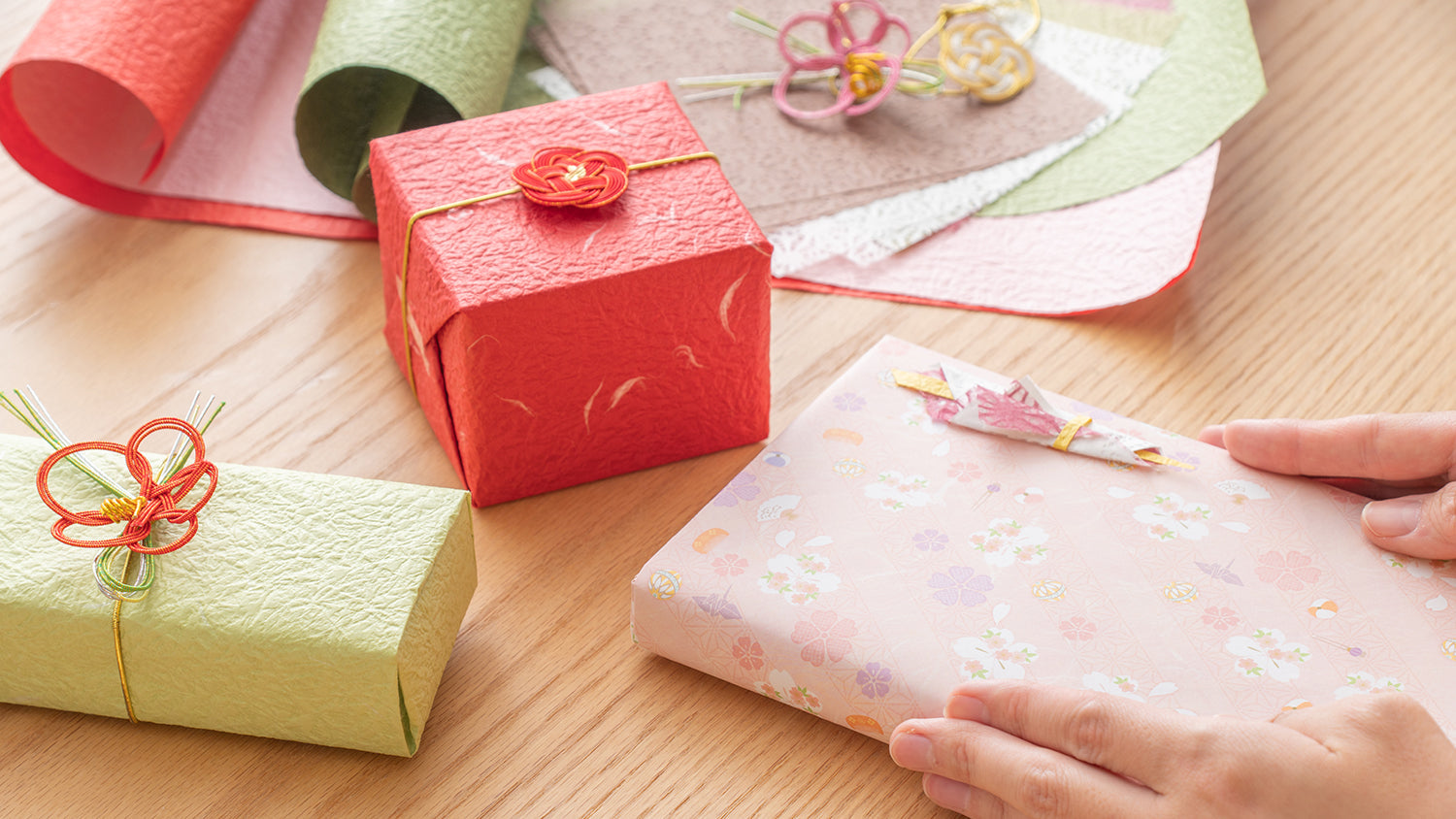

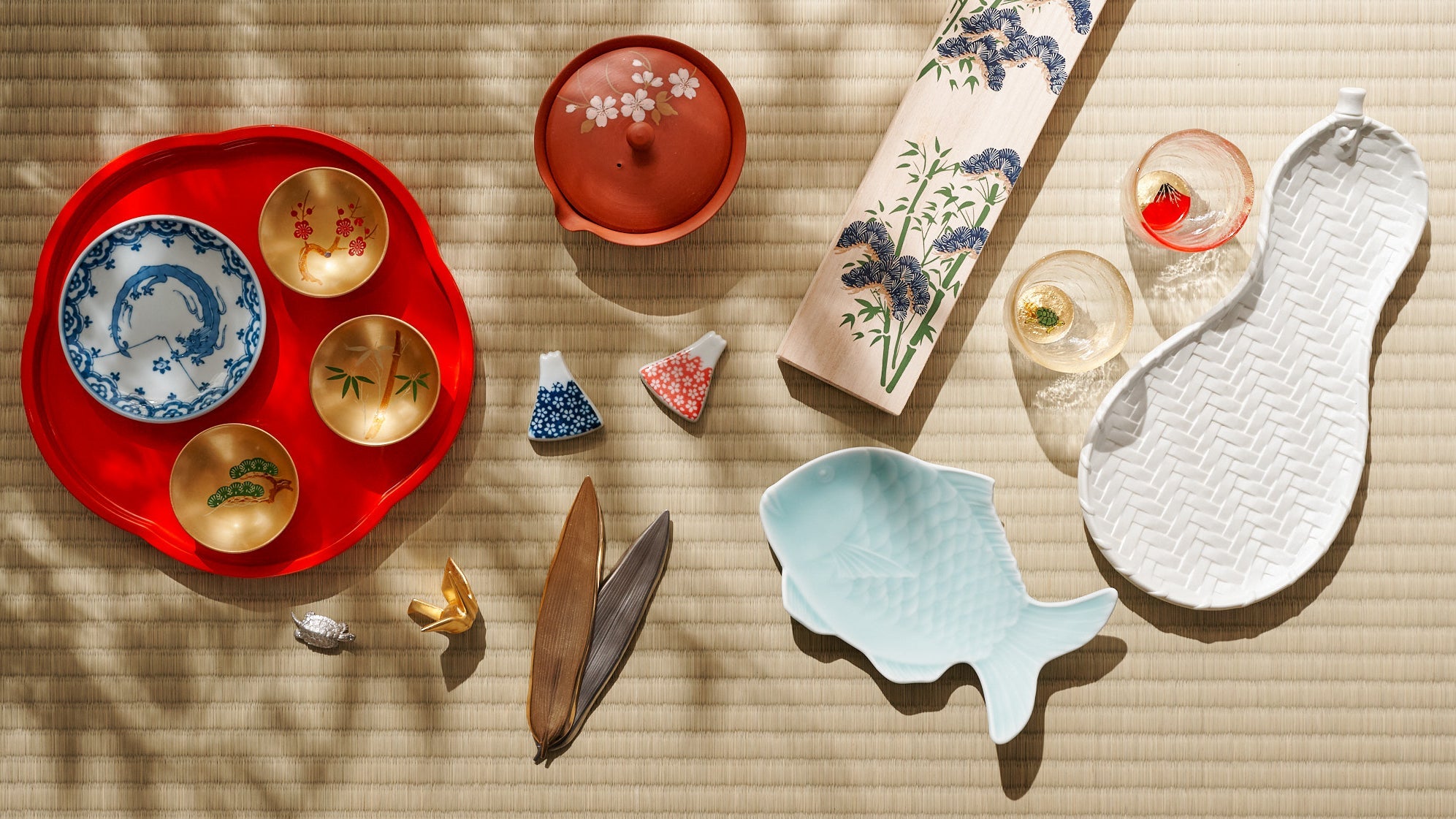
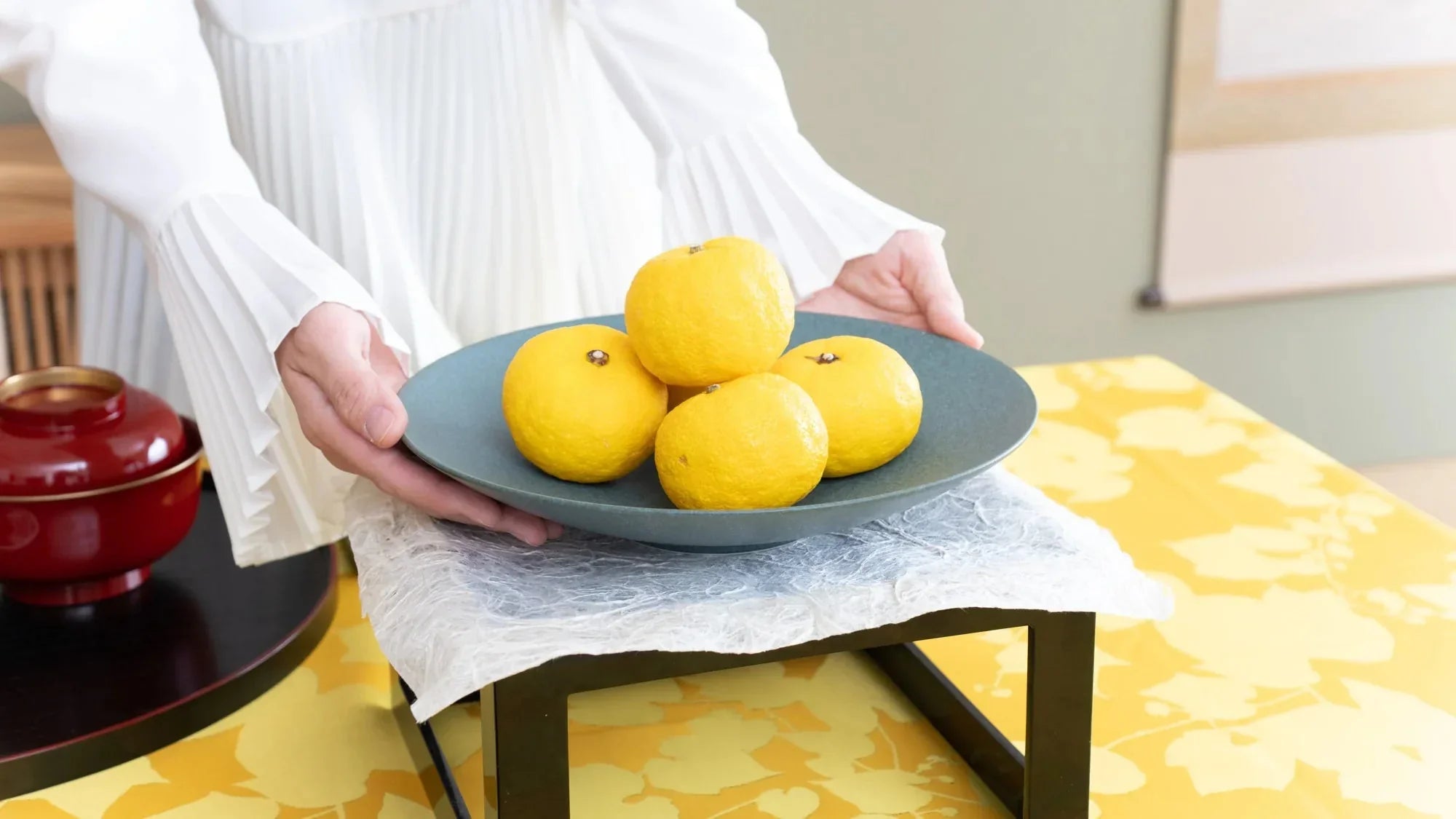
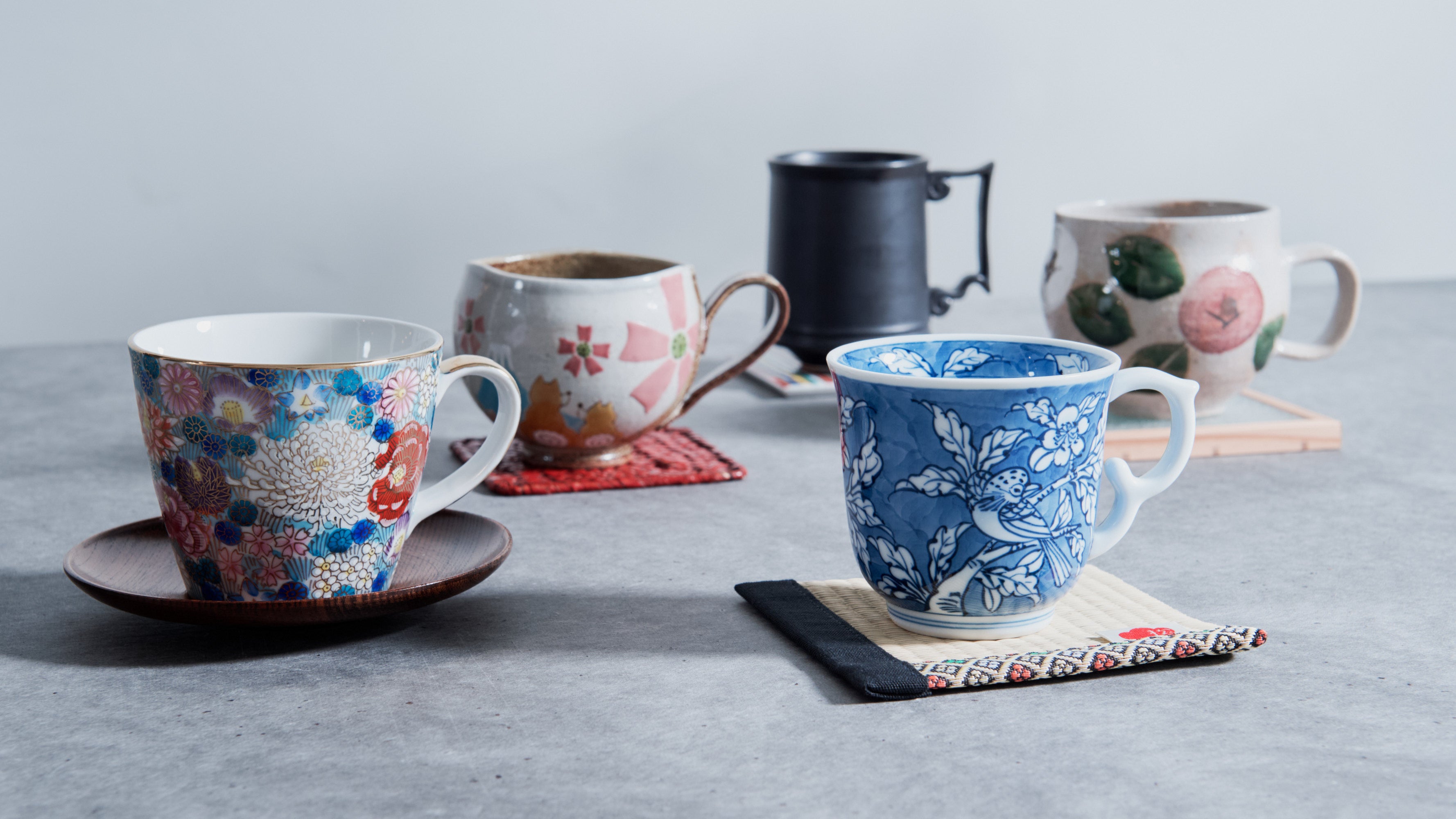
Leave a comment
This site is protected by hCaptcha and the hCaptcha Privacy Policy and Terms of Service apply.